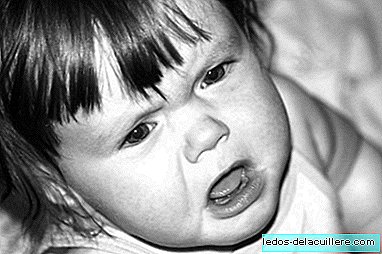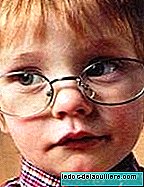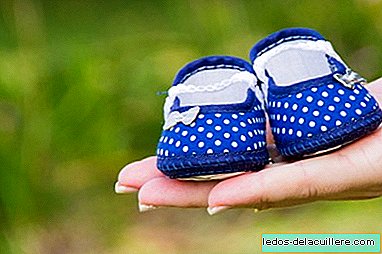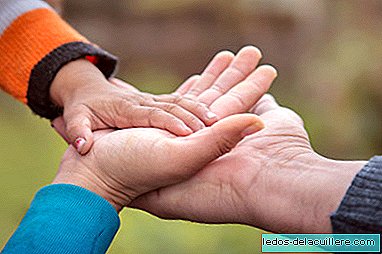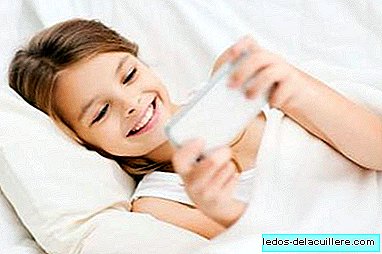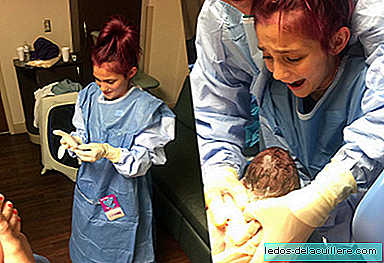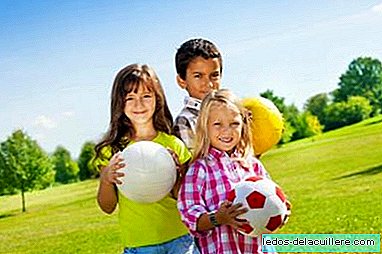
When health authorities have to call attention to something as important as physical activity, something is wrong. The multiple benefits of physical activity are known, however our society tends to be increasingly sedentary and therefore the obesity figures are alarming.
We need, to be healthy and happy, to be an active family, to play, to move and to have our children move, to practice exercise, to do sports… while we have a balanced diet.
WHO notes that Physical inactivity is a global health problem, and that up to 60% of the population does not perform the physical activity necessary to obtain health benefits, with the risks that this entails.
This time it is the Spanish Association of Pediatrics that has highlighted the high incidence of overweight and other risk factors for health that could contribute to the decrease in expectations and quality of life in adults.
As a result, he has prepared a document with physical activity tips for children and teenagers, noting that the practice of physical exercise should be incorporated into daily life as a healthy lifestyle that is recommended to acquire from childhood, as well as hygiene, safety or study.
It includes educational proposals that involve health professionals: graduates in Physical Activity and Sports Sciences coordinated with other health professionals, all in order to prevent a very important part of the harms of sedentary lifestyle.

Physical activity tips for children
The document has been prepared by the Physical Activity Working Group of the AEP and by the General Council of Graduates in Physical Education and in Physical Activity and Sports Sciences and these are its six recommendations:
Moderate or vigorous physical activity is recommended during a minimum of 60 minutes daily, can be divided into two or more sessions, mostly aerobic and interspersing vigorous activities for muscle and bone strengthening three times a week. Physical activity for more than 60 minutes brings additional health benefits.
It is necessary to consciously avoid sedentary lifestyle. Any type of daily activity is a better option than staying sedentary. In this sense, and as an example, in daily commutes it is advisable to walk, use the bicycle and climb the stairs instead of using means of transport, elevators and escalators. It is advisable to promote travel to the educational center on foot or by bicycle. Obviously, it is important to ensure study and learning time as a priority sedentary activity; however, the time that the child or adolescent is in a totally inactive physical inactivity or sedentary lifestyle should be limited as much as possible, performing activities at school recess time and promoting extracurricular activities.
The development of activity and physical exercise will be a time of fun and play. Group, fun and outdoor activities that will allow positive reinforcement are preferable, keeping them as a "fun habit" and incorporated into the everyday with more ease than the "healthy habits" imposed and very sacrificed for children. Develop muscle strengthening exercises through the game.
It must be ensured that the physical environment in which an activity is practiced is adequate and safe. In the same way, the basic safety rules for the practice of any sport must also be complied with (use of a helmet and protections if necessary, reflective material to avoid abuses, etc.).
Physical activity is recommended in any health condition.. Not only should the healthy child practice it. The usual practice of physical activity has shown innumerable benefits, adapted to each situation or disease, improving overall health status (cardiorespiratory condition, attitude, mood, physical recovery capacity, etc.) and the clinical evolution of children with chronic disease and disability. Even in those conditions that traditionally advised against their practice (motor disability, hypotonic syndromes, diseases with cardiorespiratory involvement, etc.).
When it comes to sports, you have to ensure the supply of fluids, especially when the activity is intense and the environment is hot. It is convenient to hydrate before, during and after physical exercise, since any exercise, even if it is moderate, causes the elimination of a certain amount of water and mineral salts, especially through sweat in countries with environmental conditions of more than 25 ° C temperature and especially in areas with high relative humidity; In addition to energy consumption. All this is important so that the practice of exercise is profitable, easy to assume and without metabolic risk.
According to the data of the last Health Survey of Spain, up to 12% of children between five and 14 years of age who do not perform any physical activity (8% in men and 16% in women) and these figures must be reduced, consolidating Healthy habits that improve the health of our children, current and future.
I imagine that there is a lot of time left before these health tips are not necessary, so that the whole society knows their importance. But if you get more children to exercise and have less obesity, something will have already been achieved. It is not so difficult and we have to support and accompany them in their games, in their sports, in a balanced diet, preaching as responsible parents by example.




